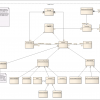 |
For Distributed Agile Teams, It’s Not All about the Tools Many managers and distributed team members think that if they just had the right tools, they could make some agile approach work. Maybe, but tools only enhance the work of a collaborative agile team. Before you select tools, make sure you have people who can work together and have enough skills and capabilities for your distributed team. Tools do not make the team; they support the team.
|
|
 |
Agile Estimates versus #NoEstimates: Bridging the Gap Agile teams can easily get puzzled by the heated debate happening between advocates for estimation and those in the #NoEstimates camp. However, by comparing how they solve these problems, we can identify many common practices between the two groups and see they are not truly at odds—they actually complement each other. Let's bridge the gap.
|
|
 |
Why You Need Continuous Testing in DevOps DevOps is more than adopting the right set of tools; it's a cultural shift that incorporates testing at each stage of the agile project lifecycle. Continuous testing is key to unlocking this culture change because it weaves testing activities into every part of the software design, development, and deployment processes, which helps everyone involved communicate more, collaborate better, and innovate faster.
|
|
 |
Applying Agile to Life: Taking Retrospectives outside the Workplace A lot of what agile teams do can be used effectively outside software development teams, and even outside the typical business organization. For instance, retrospectives and the practice of talking about what went well, what you should keep doing, and what can be improved can be applied anywhere—even to families. Read on to learn how to bring continuous improvement into your daily life.
|
|
 |
The Future of Agile Is Digital Agile software development is no longer about a better way to develop software. Agile is about changing the way digital technologies, products, and services are created to take advantage of enhanced CPU power and the tools that power has made possible. Here's how digitalization is reshaping agile teams, projects, and the very definition of success.
|
|
 |
Rowing in the Same Direction: Use Value Streams to Align Work Ambiguity abounds about value streams, so it’s good to clarify what they are, why they matter, and how to exploit them. It's important to help employees understand the organization's definition of value, to provide visibility on how business value is created, and to focus on the fast flow of value through the value streams. If everyone understands which direction to row the boat, they can steer toward it together.
|
|
 |
Requirements Mapping Using Business Function Test Suites On this team, testers were overcommitted, avoidable defects were surfacing, and documentation was hard to find. Worse, trust and morale were low. Upgrading tools was out of the question, so the testers decided to take matters into their own hands and create incremental change themselves. Here's how a team added a new type of traceability to its requirement test case world.
|
|
 |
DevSecOps: Incorporate Security into DevOps to Reduce Software Risk DevSecOps is a growing movement to incorporate security into DevOps practices in order to ensure flaws and weaknesses are exposed early on through monitoring, assessment, and analysis, so remediation can be implemented far earlier than traditional efforts. By failing fast with security testing, organizations reduce risk of a security incident and decrease the cost of rework.
|
|
 |
Why DevOps Still Needs Release Management Release management is still critical in a DevOps environment. You likely will just have to change your current process. You will no longer need to track implementation or back-out plans as part of change orders; you just need to be able to track the application, its components, and its promotion schedule. The key to maintaining these change orders is automation.
|
|
 |
Using Agile to Lead Your Agile Transformation There's something ironic about starting an agile transformation by spending six months creating a detailed transformation plan. We have to move away from a prescriptive playbook and toward a more responsive transformation model. Why not use the agile transformation as your first opportunity to be agile?
|
|

